| Look at that map again. Think about
this area as a series of shelves. The top shelf is the territory for hardy hillwakers,
where the winds blow pure across the high plateau of the Grampian mountains. Below are
delectable river valleys - Dee, Don, Deveron, Spey, winding out of the lonely moorland
places, shaded by pines, to run by farm and woodland on the lower shelves, via sturdy
towns and villages, down to the sea. 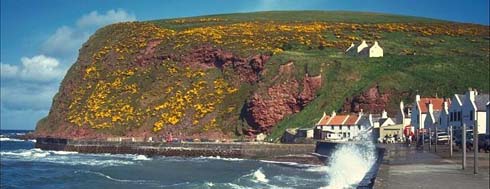
Again and again, the many Grampian themes intertwine. Mostly
inland from an attractive and wild coastline are the castles - so many they have to be
signposted. Follow along the River Spey, and more signposts will be seen, pointing to
whisky distilleries where the mysteries of the malt will be revealed. Trace the course of
the River Dee, or come from the south over the outliers of the main Grampian massif and
you will find a royal portrait on the signposts.
Prehistoric Grampian - around 6000 BC 'hunter gatherers' lived near
the estuaries of the Rivers Dee and Don. existing on a diet which included salmon and
shellfish. Much later, about 3000 BC, Stone Age
Aberdonians built burial cairns near present-day Rosemount Place. Nothing remains today,
but there are many intriguing stone circles to be seen in the countryside near Aberdeen.
From 2000 BC 'Beaker Folk' from the Rhineland settled in the area. Roman map-makers
identified the city as Devana; Norse sagas call it Apardion and tell us the Vikings landed
at Pocra Quay. Find out more about the area's early history at Marischal Museum.
Follow in the footsteps of Victoria to her beloved
Balmoral. But best
of all dip into these themes as your holiday unfolds. Castles, whisky, royal connections:
certainly, other parts of Scotland have them too - but Grampian does it better with the
widest choice!
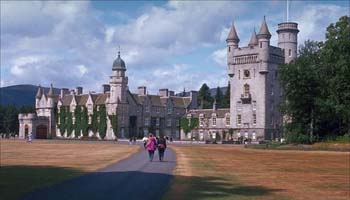
Talking of choice, if sporting activity appeals, then all
this open space in the uncluttered north-east of Scotland allows plenty of room for golf
courses - classic seaside links a speciality - though you can also amble along the Speyside Way
or on forest walks or on horseback, tumble off surfboards, bounce downhill on superb
mountain bike paths, or just cast a fly into some of the finest trout and salmon water
anywhere in Scotland.
But don't think of us as some kind of rural backwater.
Remember that Scotland's third city, Aberdeen, makes a huge contribution to the area's
economic and cultural life. If all you have heard about is oil, then think again.
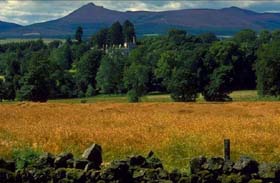
King William the Lion
granted Aberdeen Royal Burgh charters in the 12th century. These were turbulent times. and
the burgh centre moved from the harbour settlement to the Castlegate. In the 14th century,
Aberdonians supported King Robert the Bruce
in taking the Castle from the English. and used the password 'Bon Accord' . In gratitude,
the King gifted land - still known as the Freedom Lands - to the city. See the plaques
commemorating the King in Hazlehead Park. The words Bon Accord are now part of the city
Coat of Arms, and are linked to the toast "Happy to meet, sorry to part, happy to
meet again". Aberdeen is a great city for families and also for weekend breaks
- and it makes a great base for discovering the rest of the area.
Moray, one of the former Pictish provinces, lies on the southern shores
of the Moray Firth, the great inlet which bites deeply into the north-east coast of
Scotland. Forres is today famous for its marvellous parks and gardens but it is one of the
most ancient places in an area associated with the name of Macbeth. Much older spiritual sites can be found
in an area which was something of a cradle for Christianity in Scotland. Pluscarden Abbey
can trace its origins to 1230 while Spynie Palace was for a short time the principal seat
of the diocese of Moray until the consecration of nearby Elgin Cathedral in
1224. Elgin, the principal town of Moray for over eight centuries, was one of the most
important centres of medieval Scotland. The Cathedral, known as the "Lantern of the
North", is a dramatic ruin and a quite stunning testament in stone to the turbulence
of Scottish history.
The north eastern corner of Aberdeenshire is an area of deep
traditions with its own heritage and culture, shaped by the fishermen and farmers who for
centuries derived their livelihoods from the sea and the land. Centuries ago this area was
part of the Pictish province of Buchan. Arguably one of the finest castles on the Castle
Trail and, indeed, Grampian, is Fyvie with its five towers enshrining five centuries of
Scottish history. Old Deer however is a much more historic site as it was here that St Columba founded a 6th Century monastery which
produced the Book of Deer in the 9th Century -
one of the earliest known examples of Gaelic. The ruins of the later Deer Abbey lie near
this idyllic village. Fraserburgh's most celebrated son was Thomas Blake Glover founder
of the modern Japanese Navy and whose shipbuilding company grew into Mitsubishi.
Nearby Inverurie are outstanding examples of the ancient
heritage of this part of Scotland including stone circles at Loanhead of Daviot and Easter
Auquorthies and Pictish symbol stones at Kintore Kirkyard and in the shadow of Bennachie
itself, the Maiden Stone, Archaeolink,
Scotland's Pre-history Park, interprets the early history of Grampian and is the latest
addition to a superb portfolio of heritage attractions in the region.
Famous as Castle Country, 9 of the region's finest castles
and great houses are to be found on Scotland's only Castle Trail. This themed trail, which
now extends to the north as well, encompasses William Adam's stunning Haddo House and
Tolquhon Castle in the
east near Tarves where Pitmedden Garden can also be found. If one follows the trail
clockwise via the A920 and Oldmeldrum, with its town centre conservation area, onto
Inverurie then the next castle to visit is Castle Fraser; one of
the "Castles of Mar" and a fine example of a Z plan castle. The Castle Trail
continues by way of Donside to the dramatic ruins of Kildrummy Castle,
with the delightful gardens adjacent, and on via scenic Strathdon to Corgarff Castle,
standing like a lonely sentry at the foot of the Grampian mountains, guarding the famous
Cockbridge to Tomintoul road - the location of the Lecht ski area.
The beautiful Glen Tanar Estate and Braeloine Interpretative
Centre is nearby and to the north is the Lumphanan Peel Ring and Tomnaverie Stone Circle.
This part of Grampian Highlands captivated Queen Victoria and Prince Albert and today's
visitors are equally enchanted by the beguiling mix of high mountains, coniferous forests,
delightful villages and farmlands stretching to the North Sea.
In short, Grampian is a distillation of all the good things
about Scotland - environment, heritage, rural or urban life. It is also unpretentious and
genuine - a trait of the local folk of the north. You'll be make most welcome.
|

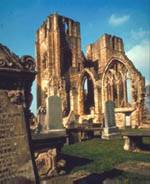

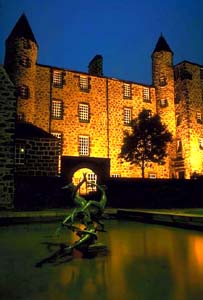
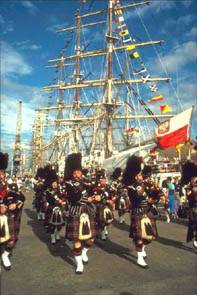
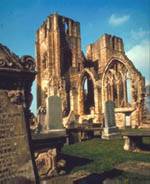
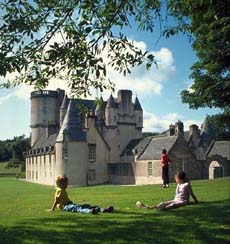
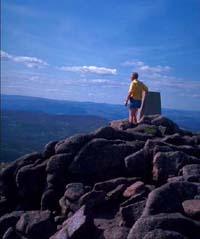
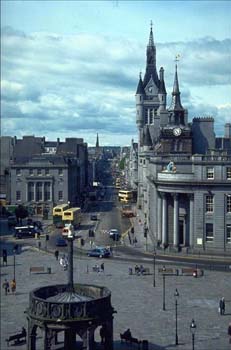
|
